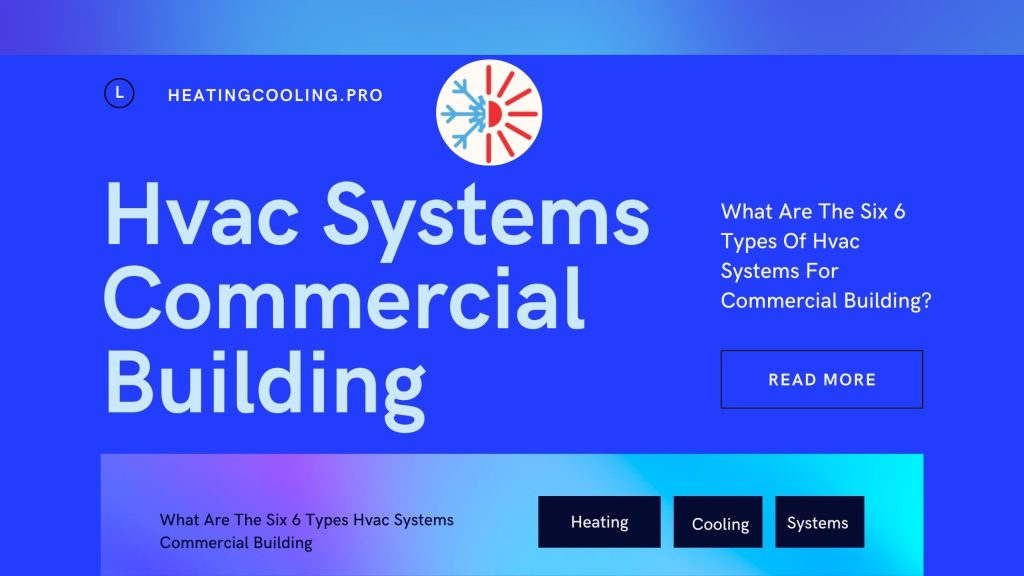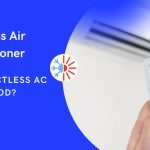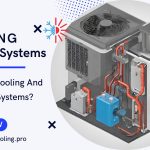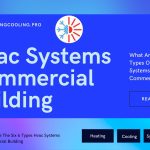In the realm of commercial buildings, achieving the perfect balance of comfort and efficiency is a mission that rests upon the capable shoulders of HVAC systems. HVAC, which stands for Heating, Ventilation, and Air Conditioning, serves as the lifeline of indoor environments by regulating temperature, humidity, and air quality. This article explores the six distinct types of HVAC systems commonly embraced in the commercial sector, each harboring its own unique strengths and weaknesses.
From ensuring the temperature remains just right to managing humidity levels and filtering the air, HVAC systems form the backbone of comfortable and productive indoor spaces. The diversity in commercial buildings demands a nuanced approach to HVAC, with different systems catering to varying needs. Understanding these systems is crucial to making informed decisions that can greatly impact both occupant comfort and operational costs. So, without further ado, let’s delve into the world of HVAC and explore the six types that reign supreme in the commercial building arena.
Understanding HVAC Systems
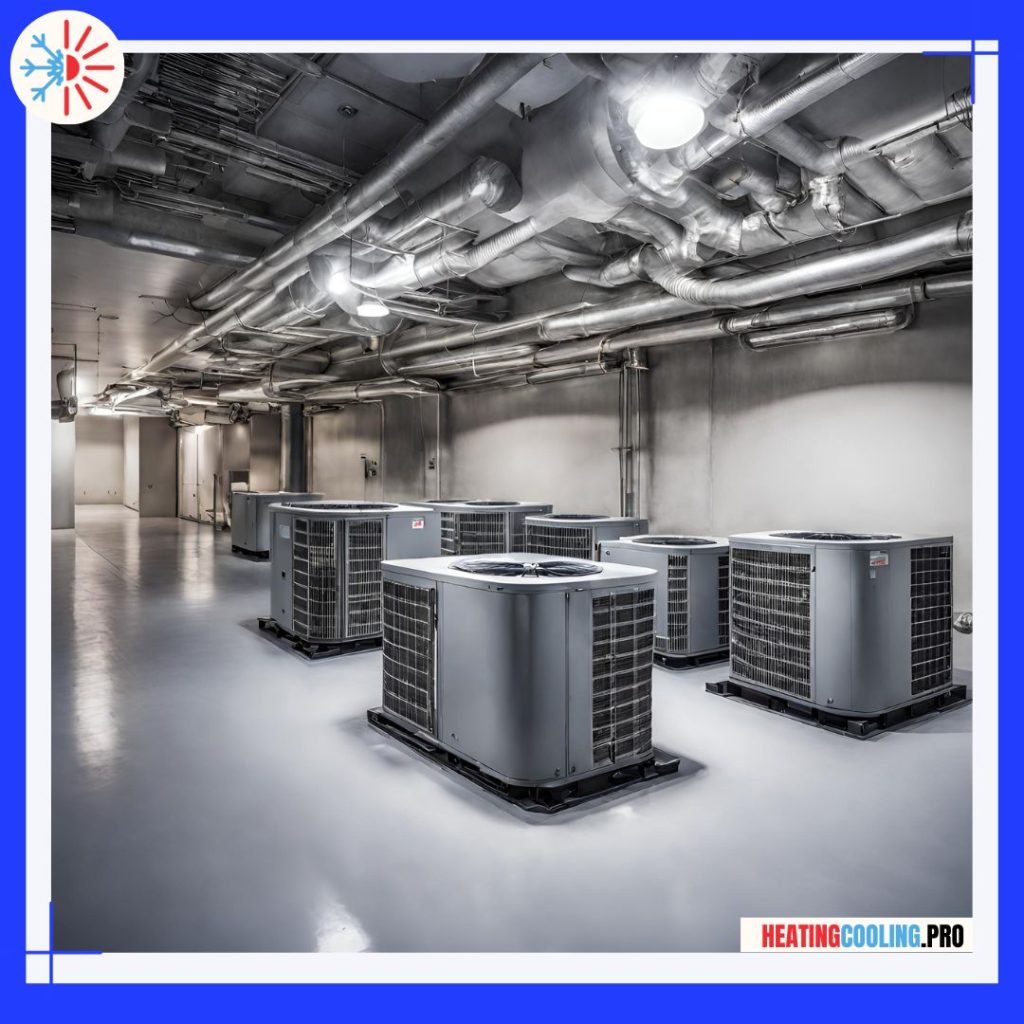
Before we dive into the specifics of each HVAC system, it’s essential to lay a solid foundation by understanding the core principles that unite them. HVAC systems are designed to create and maintain a comfortable and productive indoor environment. They achieve this by controlling three key elements: heating, ventilation, and air conditioning.
- Heating: HVAC systems provide warmth when needed, ensuring that the indoor temperature remains within a comfortable range during colder months. This is achieved using various heating methods, such as electric heating elements, gas furnaces, or heat pumps.
- Ventilation: Proper ventilation is crucial to ensure the circulation of fresh air, remove pollutants, and regulate indoor air quality. Ventilation systems are responsible for bringing in outdoor air and distributing it throughout the building. They also control the exchange of indoor and outdoor air.
- Air Conditioning: When the weather heats up, HVAC systems come to the rescue by cooling the indoor environment. This is accomplished through the use of refrigeration cycles, which remove heat from the indoor air and expel it outside.
Collectively, these systems work together to maintain a comfortable and healthy indoor environment for occupants. By controlling temperature, humidity, and air quality, they create an atmosphere conducive to productivity and well-being.
As we move forward, we’ll explore the six primary types of HVAC systems, each offering unique solutions to meet the diverse needs of commercial buildings. Whether you’re dealing with a small office space or a sprawling industrial complex, there’s an HVAC system that’s just right for the job. So, let’s journey through the world of HVAC and discover the ideal system for your commercial space.
Single Split System
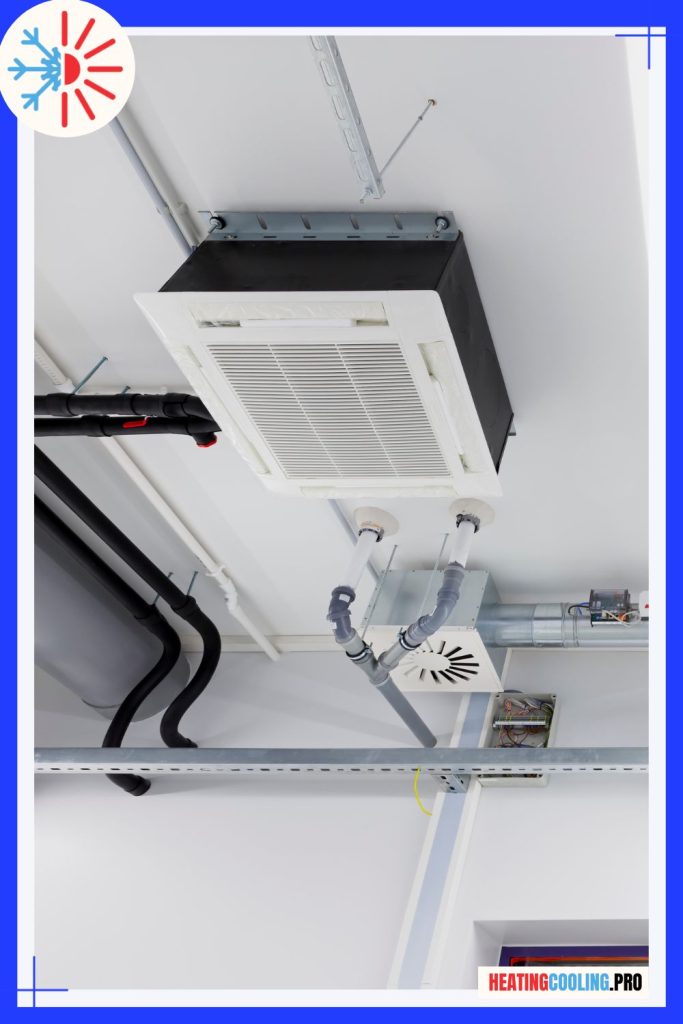
The single split system is one of the most prevalent HVAC solutions for commercial buildings. It’s a versatile choice, particularly suitable for smaller spaces. This system consists of two main components: an indoor unit and an outdoor unit. The indoor unit is typically installed within the building, while the outdoor unit is positioned externally. These two units are connected by refrigerant lines.
Advantages
- Energy Efficiency: Single split systems are celebrated for their energy efficiency. They are designed to deliver excellent performance while consuming minimal energy. This can result in significant cost savings over time, making them an economically sound choice for many commercial spaces.
- Ease of Installation: Installation is relatively straightforward and cost-effective, making it an attractive option for businesses seeking a hassle-free solution. The simplicity of the setup allows for a quicker installation process.
- Individual Control: Single split systems offer individual control for each indoor unit. This means that different zones within the building can have distinct temperature settings. It’s an ideal choice when precise climate control is required in different areas.
Disadvantages
- Limited Coverage: Single split systems are best suited for smaller commercial spaces or single rooms. In larger buildings, installing multiple single split systems can be impractical and less cost-effective.
- Aesthetic Impact: The indoor units of single split systems may take up wall or ceiling space, which can affect the aesthetics of a room. This could be a consideration for businesses that place a premium on the visual appeal of their spaces.
In summary, the single split system offers energy efficiency, ease of installation, and individualized temperature control, making it a popular choice for smaller commercial spaces. However, its limited coverage and potential impact on aesthetics are factors to consider when choosing the right HVAC system for your building.
Multi Split System
The multi split system is an extension of the single split system and is well-suited for commercial buildings that require more flexibility in zoning and climate control. This system offers the advantage of connecting multiple indoor units to a single outdoor unit, providing a versatile solution for larger spaces.
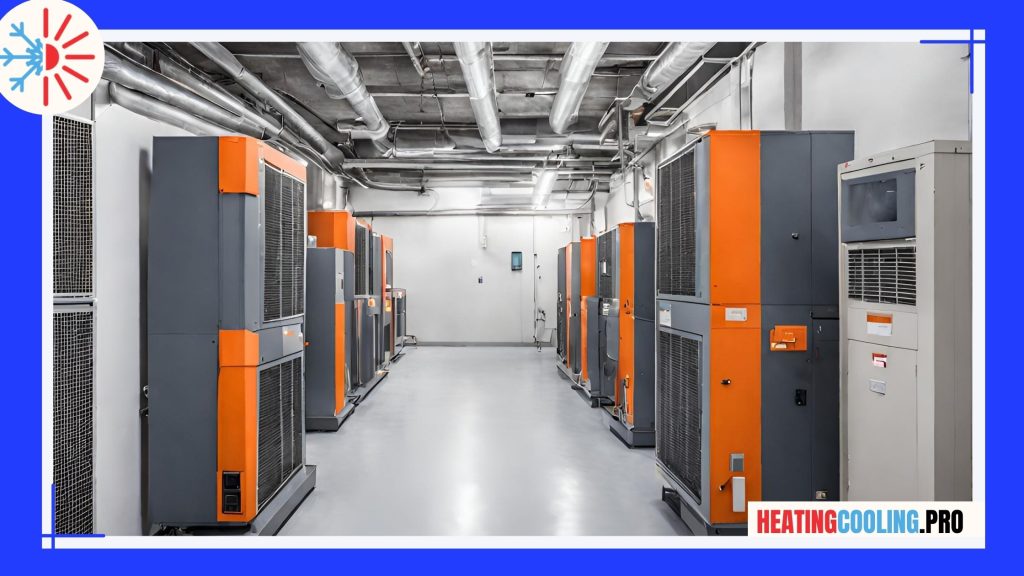
Advantages
- Zoning Options: One of the primary advantages of the multi split system is the ability to create different zones within the building. Each indoor unit can be controlled separately, allowing for individual temperature settings in distinct areas. This feature is valuable in larger commercial spaces where different zones may have varying heating and cooling needs.
- Cost-Efficient Expansion: Multi split systems offer scalability. As your commercial building grows or undergoes changes, you can easily add more indoor units to the existing outdoor unit, making it a cost-effective choice for expanding businesses. This flexibility minimizes the need for significant upfront investments.
- Energy Efficiency: Multi split systems are designed to maintain high energy efficiency, especially when compared to traditional HVAC systems. This energy-efficient operation can result in long-term cost savings and a reduced environmental impact.
Disadvantages
- Installation Complexity: While multi split systems offer numerous benefits, their installation can be more complex and costly compared to single split systems. The need for multiple indoor units and a well-planned layout requires careful design and professional installation.
- Limited Capacity: There is a limit to the number of indoor units that can be connected to a single outdoor unit. Exceeding this limit can lead to reduced performance and efficiency. For very large commercial buildings, alternative HVAC systems may be more suitable.
The multi split system’s zoning options, cost-efficient expansion, and energy efficiency make it an attractive choice for commercial buildings with diverse climate control needs. However, the complexity of installation and limitations on capacity should be considered when selecting this HVAC system.
VRF (Variable Refrigerant Flow) System
The Variable Refrigerant Flow (VRF) system is a sophisticated HVAC solution that offers both flexibility and energy efficiency. VRF technology is commonly used in larger commercial buildings where precise temperature control and efficiency are paramount.
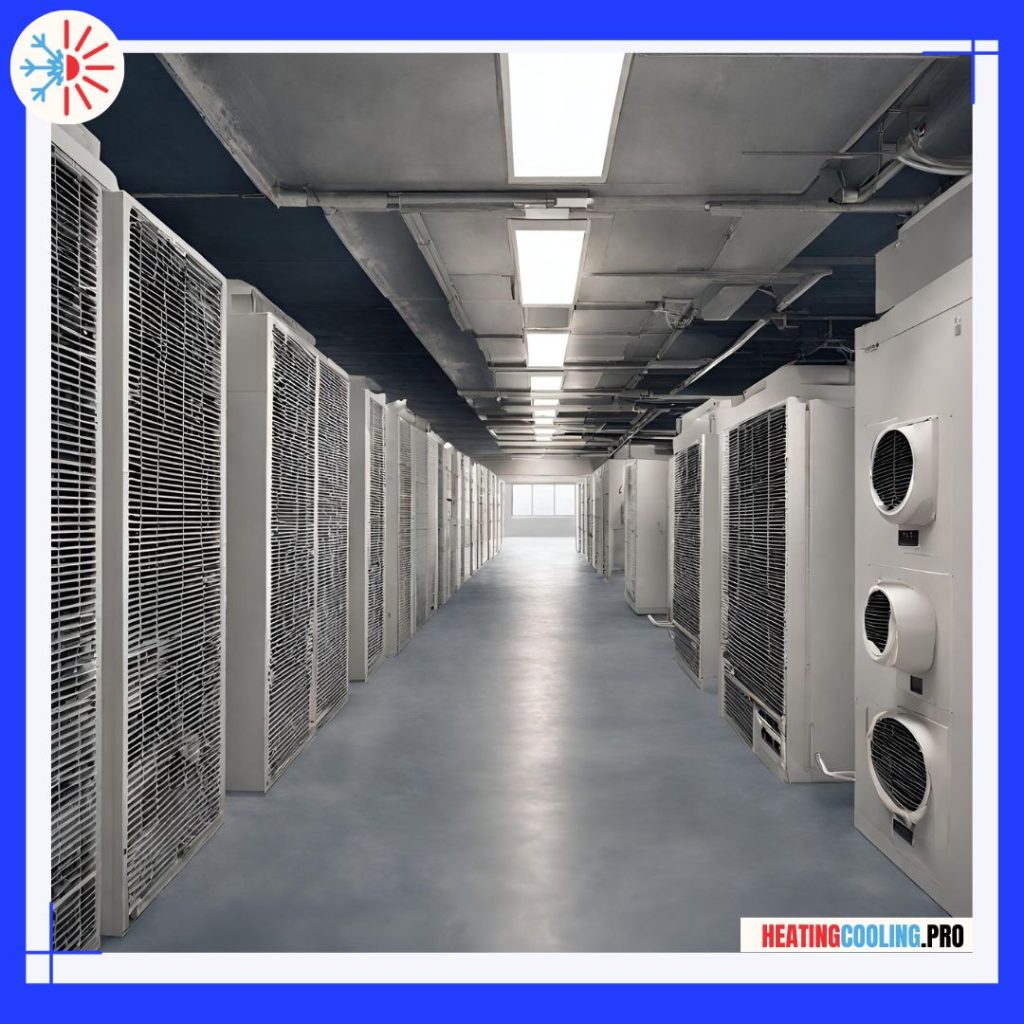
Advantages
- Precise Temperature Control: VRF systems are renowned for their ability to provide precise and individualized temperature control. They can simultaneously heat and cool different zones within a building, responding to changing demands in real-time. This level of customization ensures optimal comfort for occupants.
- Energy Efficiency: VRF systems are highly energy-efficient due to their ability to modulate the flow of refrigerant based on the specific heating and cooling needs of different areas. This results in reduced energy consumption and lower operating costs over time.
- Quiet Operation: VRF systems are known for their quiet operation. The indoor units produce minimal noise, creating a peaceful and conducive environment for occupants.
Disadvantages
- Initial Cost: The upfront cost of installing a VRF system can be higher than traditional HVAC systems, which may pose a financial challenge for some businesses. However, the long-term energy savings can offset this initial investment.
- Complex Installation and Maintenance: VRF systems are complex and require professional installation and maintenance. This means that the system may have a steeper learning curve for technicians and a potentially higher maintenance cost.
The VRF system is an excellent choice for large commercial buildings with diverse climate control needs. Its precise temperature control, energy efficiency, and quiet operation make it a top contender. However, the initial cost and complex installation should be carefully considered when opting for this sophisticated HVAC system.
Packaged Heating and Cooling Units
Packaged heating and cooling units are a compact and efficient HVAC solution commonly used in commercial buildings. They are designed for spaces where a traditional split system may not be the most practical choice.
Advantages
- Space Efficiency: Packaged units are compact and self-contained, making them ideal for buildings with limited space for HVAC equipment. They can be installed on rooftops or in mechanical rooms, freeing up valuable interior space.
- Ease of Installation: These units are relatively easy to install, and they require minimal ductwork, reducing installation time and costs.
- Energy Efficiency: Packaged units are designed to be energy-efficient, often equipped with advanced technologies like variable speed compressors and efficient heat exchangers.
Disadvantages
- Limited Zoning: Packaged units are typically designed to serve a single area or floor. This limitation can make it challenging to achieve individualized climate control for different zones within a larger commercial building.
- Aesthetic Considerations: For some businesses, the presence of rooftop units or equipment in visible locations may be aesthetically undesirable. It’s important to consider the visual impact of these units on the building’s exterior.
Packaged heating and cooling units are a practical solution for commercial buildings with limited interior space or where a self-contained system is preferred. They offer ease of installation and energy efficiency, but their limited zoning capabilities and potential aesthetic concerns should be evaluated when choosing this HVAC system.
Chilled Water System
Chilled water systems are a popular choice for commercial buildings that require efficient and flexible cooling solutions. These systems use a central chiller to produce chilled water, which is then circulated through the building to cool the air.
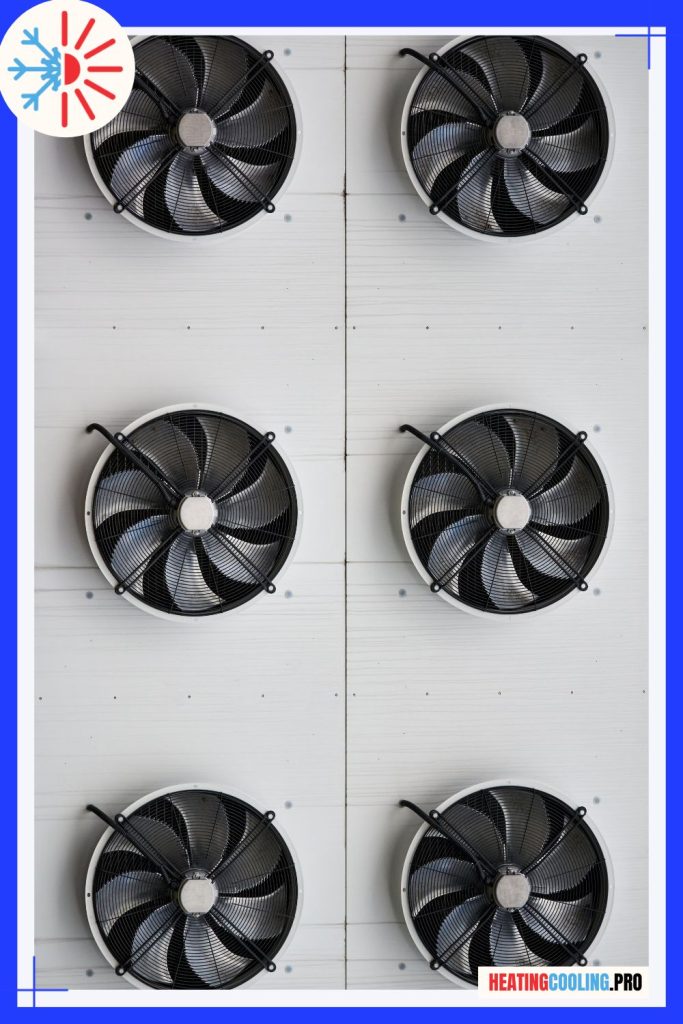
Advantages
- Energy Efficiency: Chilled water systems are known for their energy efficiency. Centralized chilling allows for efficient cooling, and the system can be equipped with variable speed components to optimize energy consumption.
- Zoning Capabilities: Chilled water systems offer excellent zoning capabilities. By controlling the flow of chilled water to different parts of the building, you can create customized climate zones, ensuring comfort and energy savings.
- Low Noise Levels: Chilled water systems typically have lower noise levels compared to some other HVAC systems, contributing to a quieter and more comfortable indoor environment.
Disadvantages
- Complex Installation: The installation of a chilled water system can be complex, requiring a network of pipes and equipment. This complexity can result in higher initial installation costs and longer project timelines.
- Maintenance Requirements: These systems need regular maintenance to ensure they operate at peak efficiency. Maintenance tasks include checking for leaks, inspecting pumps and chillers, and monitoring water quality.
Chilled water systems are an energy-efficient and flexible solution for commercial buildings that require precise climate control. They offer zoning capabilities and low noise levels, but their complex installation and maintenance requirements should be considered when selecting this HVAC system.
Centralized Air Handling Unit (AHU) System
Centralized Air Handling Unit (AHU) systems are a comprehensive HVAC solution for larger commercial buildings. These systems manage the heating, cooling, ventilation, and air distribution for the entire building from a centralized location.
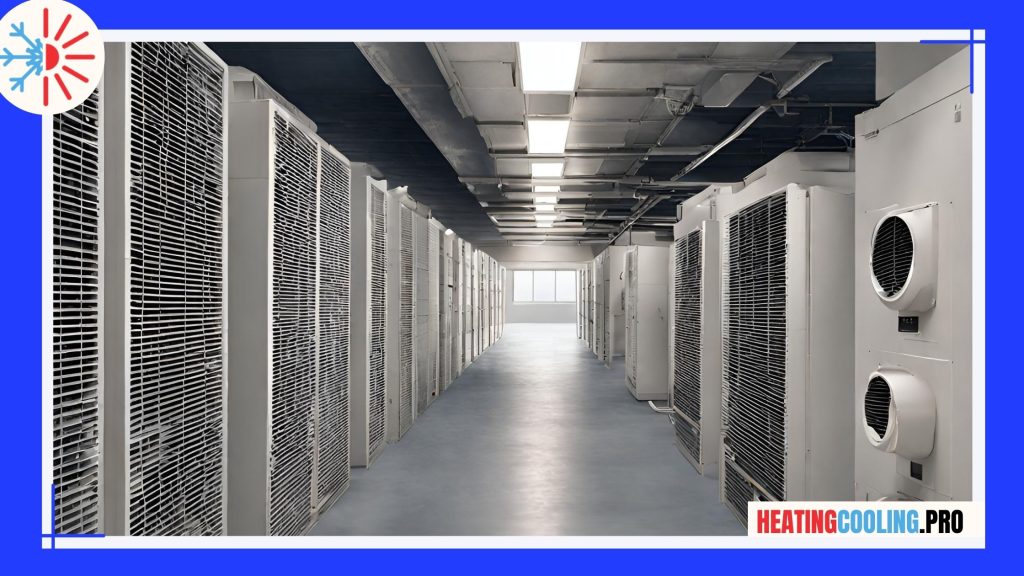
Advantages
- Complete Control: Centralized AHU systems provide complete control over the indoor environment. They can be programmed to manage temperature, humidity, and air quality according to specific building requirements.
- Efficiency and Energy Savings: Centralized systems are designed for efficiency, optimizing energy use by sharing resources and reducing redundancy. This can lead to substantial long-term cost savings.
- Air Quality Management: These systems often include advanced air filtration and ventilation options, ensuring that the indoor air quality meets health and safety standards.
Disadvantages
- Complexity and Space Requirements: Centralized AHU systems are complex and require dedicated space within the building for the central unit. This can impact available floor space.
- Higher Initial Investment: The initial cost of installing a centralized AHU system is typically higher than other HVAC options. However, the return on investment is often achieved through long-term energy savings and improved comfort.
Centralized Air Handling Unit (AHU) systems are a robust and efficient HVAC solution for larger commercial buildings. They provide complete control, energy savings, and air quality management. However, their complexity, space requirements, and higher initial investment should be carefully considered when choosing this comprehensive HVAC system.
Conclusion
In the vast landscape of commercial building HVAC systems, there is no one-size-fits-all solution. Each type of system discussed in this article offers distinct advantages and drawbacks, and choosing the right one depends on the specific needs and constraints of your commercial space.
From the versatile single split system, ideal for smaller spaces, to the highly efficient and customizable VRF system suitable for larger buildings, there’s a solution for every scenario. The packaged heating and cooling units provide space-efficient options, while chilled water systems offer excellent zoning capabilities. If complete control and energy savings are your top priorities, centralized Air Handling Unit (AHU) systems can rise to the challenge.
When making the critical decision about which HVAC system to install in your commercial building, consider factors like size, layout, budget, and long-term operational costs. It’s essential to strike a balance between comfort, energy efficiency, and ease of maintenance.
In conclusion, the choice of HVAC system can significantly impact the indoor environment, operational costs, and overall satisfaction of occupants in your commercial building. Understanding the strengths and weaknesses of each system type is the first step towards making an informed decision. So, whether you’re aiming for precise climate control in a multi-story office complex or seeking energy efficiency in a smaller retail space, choose wisely to ensure a comfortable and productive environment for all.
Have more questions about HVAC systems for commercial buildings? Check out the following FAQs.
FAQs
- Are these HVAC systems suitable for residential buildings as well?
- While some of the HVAC systems mentioned can be used in residential settings, they are primarily designed for commercial buildings. Residential HVAC systems are often simpler and more cost-effective.
- What is the average lifespan of commercial HVAC systems?
- The lifespan of commercial HVAC systems can vary widely depending on factors such as maintenance, usage, and the type of system. On average, well-maintained systems can last between 15 to 25 years.
- How can I improve the energy efficiency of my commercial HVAC system?
- To enhance energy efficiency, consider regular maintenance, upgrading to energy-efficient components, implementing zoning controls, and optimizing system settings based on occupancy and weather conditions.
- What are the maintenance requirements for these systems?
- Maintenance requirements differ for each system. Generally, maintenance includes regular filter replacement, cleaning of components, and periodic inspections by qualified technicians.
- Are there government incentives for installing energy-efficient HVAC systems in commercial buildings?
- Many governments offer incentives and rebates for businesses that install energy-efficient HVAC systems. These programs are aimed at reducing energy consumption and greenhouse gas emissions.
Remember to consult with HVAC professionals to assess your specific needs and make an informed decision that aligns with your commercial building’s requirements and goals.
